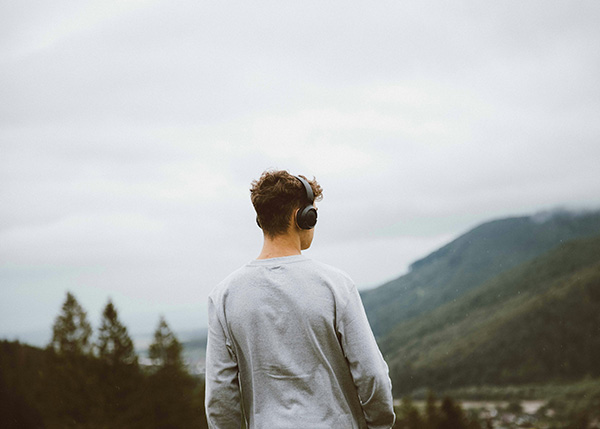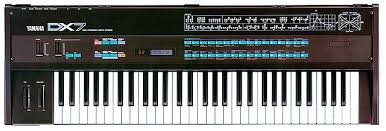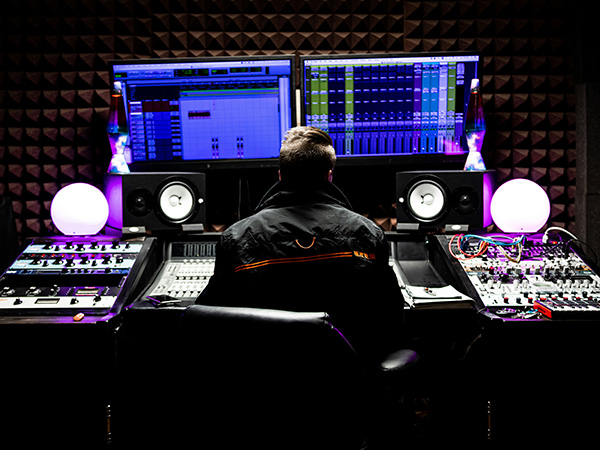Ambient music is a genre that focuses on creating atmospheric soundscapes, using repetitive patterns and textures to evoke a specific mood or atmosphere.
Subgenres of Ambient
History of Ambient Music
Famous Ambient Artists
Famous Ambient Audio Engineers
Production & Mixing Tips
Subgenres of Ambient
Dark Ambient
Characterized by eerie and haunting atmospheres, often incorporating elements of industrial or experimental music.
Space Ambient
Focuses on creating cosmic and expansive soundscapes, often inspired by science fiction and space exploration.
Drone Ambient
Characterized by long, sustained tones and minimalistic compositions, creating a meditative and immersive sonic experience.
Minimal Ambient
Emphasizes simplicity and repetition, often featuring sparse instrumentation and subtle variations over time.
Neo-Classical Ambient
Combines ambient textures with classical music elements, such as orchestral instruments or piano, creating a blend of traditional and atmospheric sounds.
Soundscapes
Explores the creation of immersive sonic environments, using field recordings and natural sounds to transport listeners to specific locations or evoke specific atmospheres.
Trip Hop
A fusion of electronic music, hip hop, and ambient elements, characterized by downtempo beats, atmospheric textures, and soulful or jazzy influences.
History of Ambient Music
The history of ambient music can be traced back to the mid-20th century when experimental composers began to explore new ways of creating soundscapes and shifting the focus from traditional musical structures to atmospheric textures.
One significant precursor to ambient music was the work of French composer Erik Satie in the late 19th and early 20th centuries. Satie’s concept of “Furniture Music” or “Musique d’ameublement” aimed to create background music that seamlessly blended with the environment, influencing the idea of creating music for ambiance rather than as a focal point.
In the 1970s, British musician Brian Eno became a key figure in the development of ambient music. Eno coined the term “ambient” and released groundbreaking albums like “Discreet Music” (1975) and “Ambient 1: Music for Airports” (1978). These albums introduced the concept of using music as an atmospheric backdrop, creating a tranquil and meditative listening experience. Eno’s influence extended beyond his own music, as he collaborated with other artists and produced albums that pushed the boundaries of ambient music.
Throughout the following decades, ambient music continued to evolve and diversify, with artists exploring different subgenres and incorporating various influences, ranging from classical to electronic and beyond. The genre found its place in film soundtracks, meditation practices, and art installations, cementing its status as a unique and powerful form of sonic expression.
Today, ambient music remains a vibrant and ever-expanding genre, offering listeners an escape into ethereal soundscapes and a gateway to introspection and relaxation.

The Gear That Shaped Ambient


Plate Reverb
Plate reverb is a type of artificial reverb that uses a large metal plate to create a distinctive and lush reverberation effect. It became a staple in ambient music production, adding depth and spaciousness to soundscapes. The EMT 140 plate reverb, introduced in the 1950s, is particularly renowned for its warm and immersive sound.


Delay Units
Delay units, such as tape delays and digital delay processors, have played a significant role in shaping the sound of ambient music. By creating echoes and repetitions of sound, delays contribute to the ethereal and expansive qualities of ambient compositions. Artists like Brian Eno utilized delay units extensively in their ambient works, allowing for the creation of evolving and atmospheric sonic textures.


Yamaha DX7
The Yamaha DX7, with its revolutionary digital FM synthesis, undeniably shaped the sound of ambient music. Its rich and complex timbres, lush pads, and ethereal textures became the hallmark of the genre. The DX7’s ability to create otherworldly soundscapes, combined with its intuitive interface, made it a go-to instrument for ambient artists, allowing them to explore new sonic territories and evoke a sense of tranquility and introspection. Its influence on ambient music is profound, forever imprinting its distinctive sonic imprint on the genre’s sonic landscape.


Famous Ambient Artists
1960s-1970s: Brian Eno – Often credited as the pioneer of ambient music, Brian Eno’s albums like “Ambient 1: Music for Airports” set the foundation for the genre. Tangerine Dream – This German electronic music group experimented with atmospheric and dreamy soundscapes, influencing the ambient genre with albums like “Phaedra.”
1980s: Harold Budd – Known for his collaborations with Brian Eno, Harold Budd created evocative and introspective ambient compositions. Laraaji – An American musician known for his celestial and meditative ambient music, often incorporating zither and electronic elements.
1990s: The Orb – A British electronic music duo, The Orb blended ambient, dub, and techno to create a unique sound. Their album “Adventures Beyond the Ultraworld” is considered a classic of the genre. Global Communication – This British duo explored ethereal and atmospheric soundscapes, with their album “76:14” becoming a landmark ambient release. Aphex Twin has made significant contributions to the ambient genre as well as other electronic subgenres. His album “Selected Ambient Works 85-92” is considered a seminal release in the ambient music canon, showcasing his ability to create immersive and atmospheric soundscapes.
2000s: Stars of the Lid – This American duo, known for their ethereal and immersive soundscapes, became synonymous with the genre in the 2000s. Biosphere – Norwegian musician Biosphere created captivating ambient music inspired by nature and environmental themes.
2010s: Tim Hecker – Canadian musician Tim Hecker pushed the boundaries of ambient music in the 2010s with his experimental approach. Helios – Keith Kenniff, under the moniker Helios, crafted beautiful and introspective ambient compositions, often incorporating acoustic elements.
Three Sonic Qualities of Ambient Music
Emphasis on Mood and Texture: Ambient music prioritizes creating a particular mood or atmosphere through the use of textures and sonic layers. It focuses less on traditional melodies and rhythms found in pop or classical music.
Spaciousness and Contemplative Soundscapes
Ambient music often incorporates spacious and contemplative sonic elements, evoking a sense of floating, cruising, or flying. It can lack conventional melodic, rhythmic, or vocal components, instead emphasizing a continuum of spatial imagery and emotion.
Sonic Wallpaper and Atmospheric Presence
Ambient music can be described as sonic wallpaper, creating an atmosphere or mood without demanding focused attention. It utilizes textural layers of sound to evoke a particular ambiance or feeling, often without traditional songwriting structures.
Famous Ambient Audio Engineers
Roger Eno
While primarily known as a composer and musician, Roger Eno has also made notable contributions as an audio engineer in the ambient music genre. With his keen sense of sonic aesthetics, he has mastered albums for various ambient artists, meticulously sculpting and balancing the intricate layers of sound to create immersive sonic landscapes. His expertise in capturing the ethereal and atmospheric qualities of ambient music has played a crucial role in shaping the genre.
Steve Roach
In addition to being a highly regarded ambient musician, Steve Roach is renowned for his exceptional skills in engineering and mastering ambient recordings. Roach’s meticulous attention to detail and his ability to create immersive sonic environments have made him a sought-after audio engineer in the genre. His expertise in blending and sculpting sounds has brought depth and clarity to countless ambient albums, allowing listeners to fully immerse themselves in the expansive sonic journeys he helps create.
Taylor Deupree
Taylor Deupree is not only a respected ambient musician but also an accomplished audio engineer and mastering engineer. His deep understanding of the genre’s aesthetic principles and his technical prowess have made him a trusted figure in the ambient music community. Deupree’s expertise lies in his ability to enhance the delicate nuances and subtleties in ambient recordings, ensuring that the sonic elements blend harmoniously and evoke the intended emotions. His mastering work has contributed to the sonic richness and clarity of numerous ambient albums.
Christopher Willits
Christopher Willits is a multidisciplinary artist who has made significant contributions to the ambient music scene as both a recording engineer and a mastering engineer. Known for his innovative approach to sound manipulation and production techniques, Willits has worked with various ambient artists to help shape their sonic visions. His expertise in using cutting-edge technology and his keen ear for detail have resulted in meticulously crafted ambient recordings that captivate listeners with their depth and clarity.
These audio engineers have played a vital role in shaping the sound and quality of ambient music through their expertise in mixing and mastering. Their dedication to capturing the essence of the genre and their meticulous attention to detail have contributed to the immersive and transformative experiences that ambient music offers to its listeners.


Three Mixing & Mastering Tips for Ambient
Stereo Imaging
Creating a spacious and immersive stereo image is crucial in ambient music. To achieve this, consider using techniques such as panning, stereo widening, and careful placement of sound elements within the stereo field. Experiment with different levels of stereo width to find the right balance, ensuring that the mix feels wide and expansive without losing focus or becoming too narrow.
Dynamic Control and Compression
While ambient music typically doesn’t have prominent drums or percussive elements, it’s still important to control the dynamics of the mix. Use compression selectively to even out the levels of different elements and create a more cohesive sound. However, be cautious not to over-compress, as it can diminish the natural dynamics and subtleties that are integral to the genre. Focus on gentle compression and use it sparingly to maintain the delicate balance of the ambient soundscape.
Tonal Balance and EQ
Achieving a balanced frequency spectrum is essential in ambient music. Pay attention to the tonal balance of the mix, ensuring that no frequency range dominates or feels lacking. Use EQ to shape the individual elements and carve out space for each sound to coexist harmoniously. Be mindful of the low end, as excessive low frequencies can muddy the mix. Consider mono-ing the low end to maintain clarity and prevent phase issues, especially if there are layered bass elements.
Why Hire a Professional Audio Engineer or Producer for Ambient / Soundscapes?
While it is possible to learn and do mixing and mastering ambient / soundscapes yourself, hiring a professional can provide a level of expertise, objectivity, and efficiency that can greatly benefit your hip-hop music production.
Expertise and Experience
Professional engineers and producers have extensive knowledge and experience in working with hip-hop music. They understand the genre’s specific requirements, such as achieving the right balance between the beats, vocals, and other elements, and creating a polished and cohesive sound.
Technical Expertise
Professional engineers have extensive knowledge and experience in the field of audio engineering. They understand the intricacies of mixing and mastering techniques specific to ambient music, such as creating a spacious soundstage, managing delicate dynamics, and achieving a balanced frequency spectrum. Their expertise allows them to bring out the best in your tracks and ensure they sound polished and professional.
Objective Perspective
As the creator of ambient music, it can be challenging to maintain an objective perspective during the mixing and mastering process. A professional engineer brings a fresh set of ears and a critical listening approach. They can identify areas that may need improvement, offer creative suggestions, and make precise adjustments to enhance the overall sonic quality of your ambient music.
Quality Equipment and Tools
Professional engineers often have access to high-quality equipment, plugins, and specialized tools that can elevate the sound of your ambient music. They are familiar with industry-standard software and hardware, allowing them to apply advanced techniques and achieve professional-grade results. This access to resources can significantly enhance the clarity, depth, and overall impact of your ambient music.
Time and Efficiency
Mixing and mastering can be time-consuming and require attention to detail. By hiring a professional, you can save time and focus on other aspects of your music career while knowing that your tracks are in capable hands. Professionals have streamlined workflows and efficient processes to deliver timely and high-quality results.